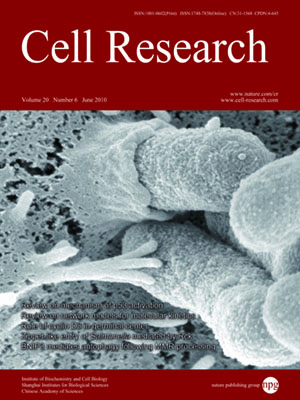
Volume 20, No 6, Jun 2010
ISSN: 1001-0602
EISSN: 1748-7838 2018
impact factor 17.848*
(Clarivate Analytics, 2019)
Volume 20 Issue 6, June 2010: 614-621
REVIEWS
New insights into p53 activation
Christopher L Brooks1 and Wei Gu2
1Stemline Therapeutics, Inc., 1675 York Avenue, Suite 34-L, New York, NY 10128, USA
2Institute for Cancer Genetics, and Department of Pathology, College of Physicians & Surgeons, Columbia University, 1130 St. Nicholas Ave., New York, NY 10032, USA
Correspondence: Christopher L Brooks,(cbrooks@stemline.com)
The tumor suppressor p53 is a multifunctional, highly regulated, and promoter-specific transcriptional factor that is uniquely sensitive to DNA damage and cellular stress signaling. The mechanisms by which p53 directs a damaged cell down either a cell growth arrest or an apoptotic pathway remain poorly understood. Evidence suggests that the in vivo functions of p53 seem to balance the cell-fate choice with the type and severity of damage that occurs. The concept of antirepression, or inhibition of factors that normally keep p53 at bay, may help explain the physiological mechanisms for p53 activation. These factors also provide novel chemotherapeutic targets for the reactivation of p53 in tumors harboring a wild-type copy of the gene.
Cell Research (2010) 20:614-621. doi:10.1038/cr.2010.53; published online 20 April 2010
FULL TEXT | PDF
Browse 2069


